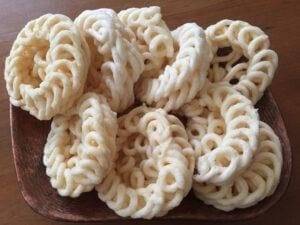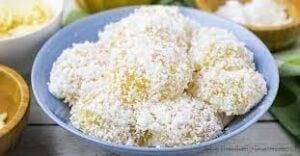5 Iconic Asian Dishes You’ve Never Heard Of
Think vs know about sushi or ramen, but Asian cuisine has much more sophisticated and traditional dishes that are not so popular in the rest of the world.
What could be better than wonderful dishes that give us energy and pleasure? Good nutrition has a positive effect on our quality of life, but entertainment is also very important. You can have a good time and have fun online on TonyBet.
In this article, we will tell you about the most ironic dishes of Asia. Let’s go!

Krupuk (Indonesia, Malaysia, Philippines)
A non-banal snack is a snack from Southeast Asia, which consists of crackers that are made based on starch and various unsweetened additives, such as seafood and spices. These crunchy crackers are the most popular snack in Asia, and their place of origin is Indonesia, which has the largest number of their variations. Many will say that they are similar to shrimp chips, but no, they have a denser structure, larger size, and different tastes. These crackers are found both in packaged form and sold by weight at street vendors.
 Pichi-pichi (Philippines)
Pichi-pichi (Philippines)
Pichi pichi is a Filipino dessert consisting of three key ingredients: grated cassava, sugar, and water. The mixture is steamed until it acquires a dense, sticky texture, and then rolled in dried coconut chips. For a more contrasting taste, this dessert is often sprinkled with grated cheese.
Pecel Salad (Indonesia)
Indonesian pecel is considered both as a salad and as a sauce. This dish is a combination of thick peanut sauce with vegetables. The sauce is made based on roasted peanuts with the addition of black pepper, chili pepper, palm sugar, garlic, and shrimp paste. Often Kaffir lime, salt, and fragrant ginger are added to it and mixed with vegetables of your choice.
Pepper Crab (Singapore)
Many will say. that it’s a kind of chili crab. another traditional Singaporean dish, and they will be partly right. Its preparation consists in frying the crab with black pepper, garlic, shallots, and oyster sauce over high heat. This dish is rarely cooked at home and is usually served in restaurants, and its two main differences from chili crab are the presence of black pepper instead of chili, which makes the dish almost not spicy, as well as the use of a whole crab for cooking. After cooking the crab, it is often decorated with coriander leaves and served with rice as a side dish.
Green Curry (Thailand)
Kaeng khiao wan is the traditional Thai name for a rich green curry. Thai green curry is a dish based on fragrant and spicy green chili pepper, brought to Thailand by Portuguese missionaries in the 16th century. Fresh chili peppers are ground into a paste and mixed with ingredients such as galangal, shrimp paste, lemongrass, garlic, turmeric, coriander, kaffir leaves, and whole peas of pepper. Pasta is the heart of every green curry, the base that determines the final taste of the dish.
Another important ingredient is coconut milk, which perfectly balances the sharpness of green chili, but at the same time gives it a creamy taste and a subtle sweetness. Although green paste can be easily found in specialty stores and regular supermarkets, the freshness of the ingredients is a key element of green curry, so it is always recommended to use fresh spices that should be ground in a mortar.
Additional ingredients for making green curry are very diverse. They usually include meat or seafood, as well as a variety of vegetables. The side dish is often served with simple steamed rice, fragrant rice with jasmine, traditional rice noodles, and fried vegetables and of course rice tea.


6 Comments
Jatin
Really interesting! Thanks for the insight, i really appreciate it.
Tamra Phelps
One of my favorite Asian foods is the dessert they have at every Chinese restaurant: those sort of doughnut things with suagr coating. What are those called???
Connie: The Head Peanut
Ohhhh I know what you are describing but I can’t think of the name. NOW I’m hungry again!
Cathy
The Pichi-Pichi sounds quite delicious. I love learning about new dishes from other countries. Amazing 🙂
heather
I have never heard of any of these Asian dishes. I sure want to try these they sound so yummy.
Tamra Phelps
I do love trying new dishes, and the Phillipines’ dishes are some I haven’t really explored much.